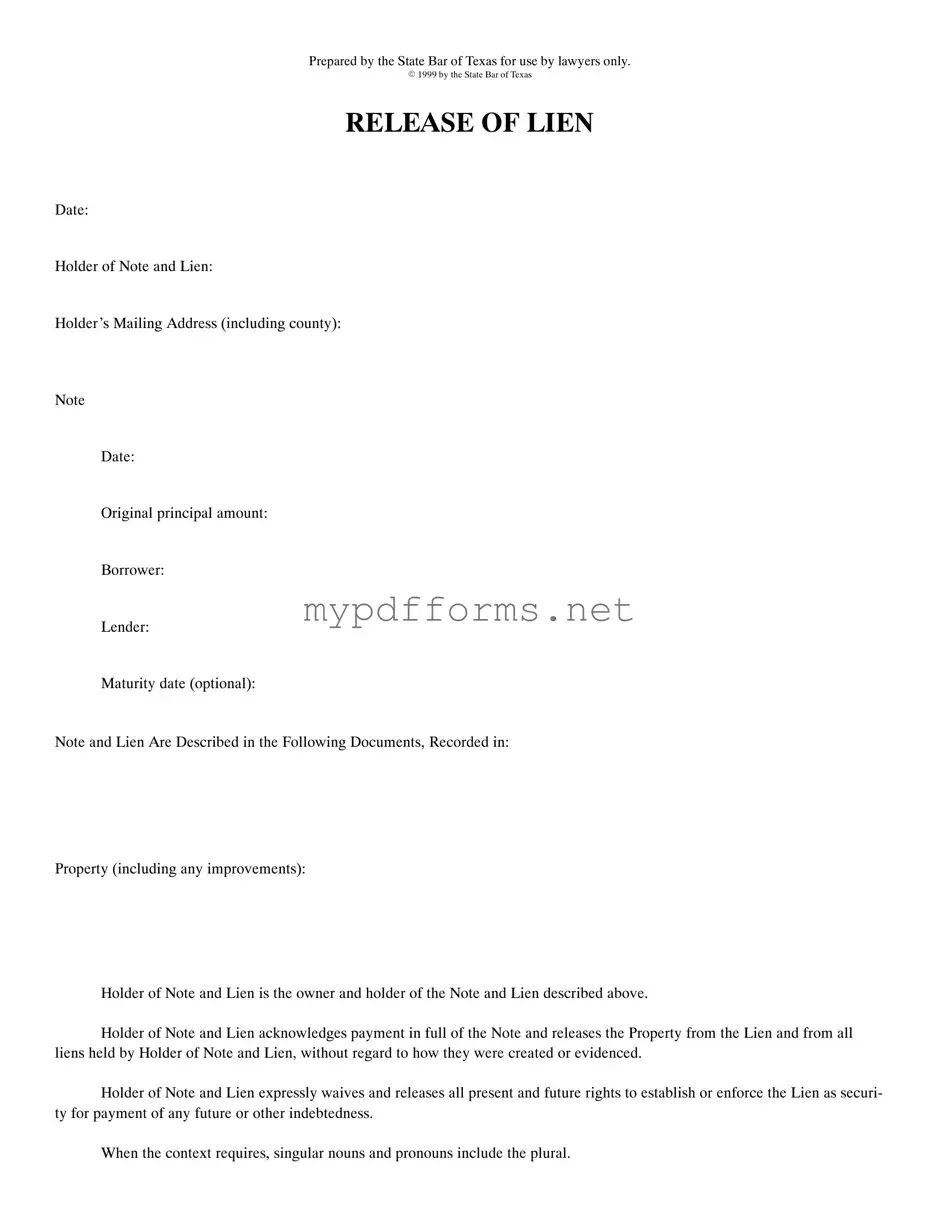The "Release of Lien" form in Texas shares similarities with a "Satisfaction of Mortgage" document. Both documents serve to formally acknowledge that a debt secured by a lien has been fully paid. In the case of a mortgage, once the borrower pays off their home loan, the lender issues a Satisfaction of Mortgage to indicate that the mortgage lien has been removed from the property. This document is crucial for the homeowner, as it clears the title and confirms that they own the property free of the lender’s claim.
Another document akin to the Release of Lien is the "Deed of Release." This document is typically used when a property owner has settled their obligations under a specific contract or agreement. Similar to the Release of Lien, a Deed of Release serves to remove any claims or encumbrances associated with the property. It acts as a formal declaration that the property is no longer subject to the previous obligations, thus providing clarity and security to the property owner.
The "Quitclaim Deed" is also comparable to the Release of Lien. This document allows one party to transfer their interest in a property to another party without guaranteeing that the title is clear of liens or claims. While the Quitclaim Deed does not explicitly release a lien, it can be used in conjunction with a Release of Lien to ensure that the transferring party is no longer associated with the property’s financial obligations. This dual approach helps protect the interests of both parties involved in the transaction.
A "Certificate of Satisfaction" is another document that mirrors the purpose of a Release of Lien. It is issued by a lender once a borrower has fulfilled their loan obligations. This certificate serves as proof that the debt has been satisfied and that the lender relinquishes any claim to the property. Like the Release of Lien, it is essential for ensuring that the property title is clear, allowing the owner to sell or refinance without complications.
When dealing with property transfers, ensuring that all legal documents are appropriately filled out is essential for a smooth transaction. An important consideration is the Quitclaim Deed, which provides a straightforward way to transfer ownership without title guarantees. For those interested in this process, more information and a fillable form can be found at https://quitclaimdocs.com/fillable-texas-quitclaim-deed/, facilitating a seamless transition of property rights.
The "Notice of Default" can also be considered similar, though it serves a different purpose. This document is filed when a borrower has failed to meet their loan obligations, and it acts as a warning that a lien may be enforced. While it does not release a lien, understanding the implications of a Notice of Default can help property owners navigate their obligations and avoid potential liens, making it a critical document in the context of property ownership.
Another related document is the "Lien Waiver." Often used in construction projects, a Lien Waiver is a document from a contractor or supplier stating they have been paid for their work and will not place a lien on the property. This is similar to a Release of Lien in that it ensures the property owner is protected from future claims regarding unpaid debts related to the project, thus maintaining the integrity of the property title.
Finally, the "Termination of Lease" document bears some resemblance to the Release of Lien. When a lease is terminated, the property owner is released from the obligations of the lease agreement, similar to how a lien is released once a debt is paid. This document ensures that the tenant no longer has any rights to the property, allowing the owner to regain full control without any encumbrances.
